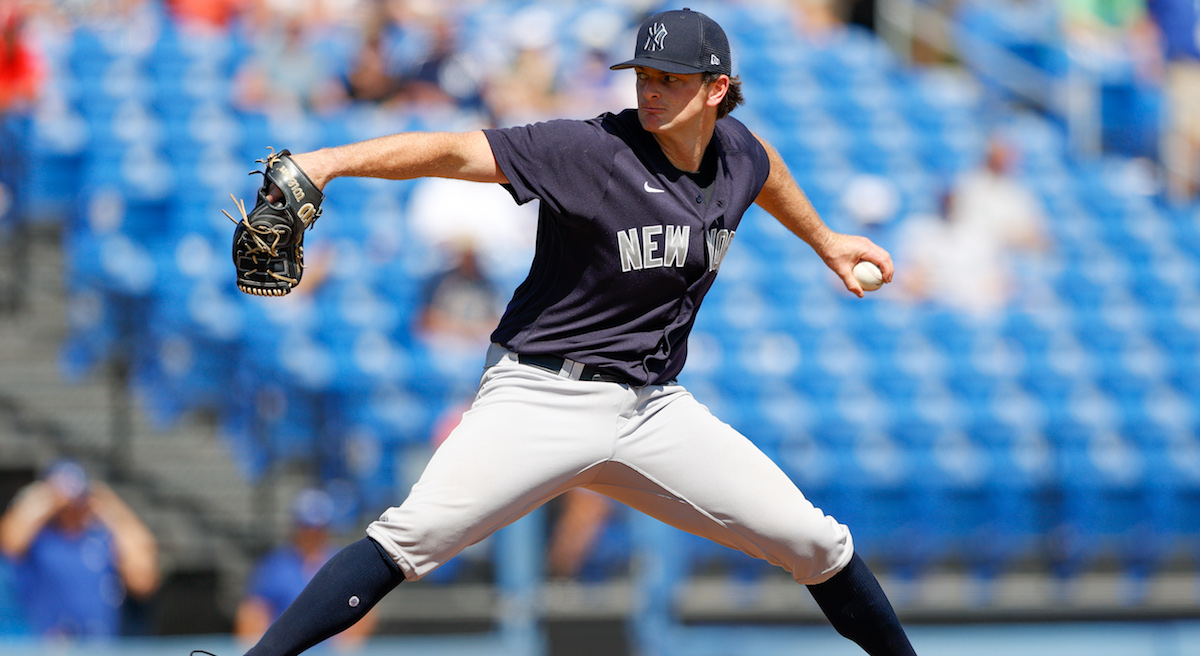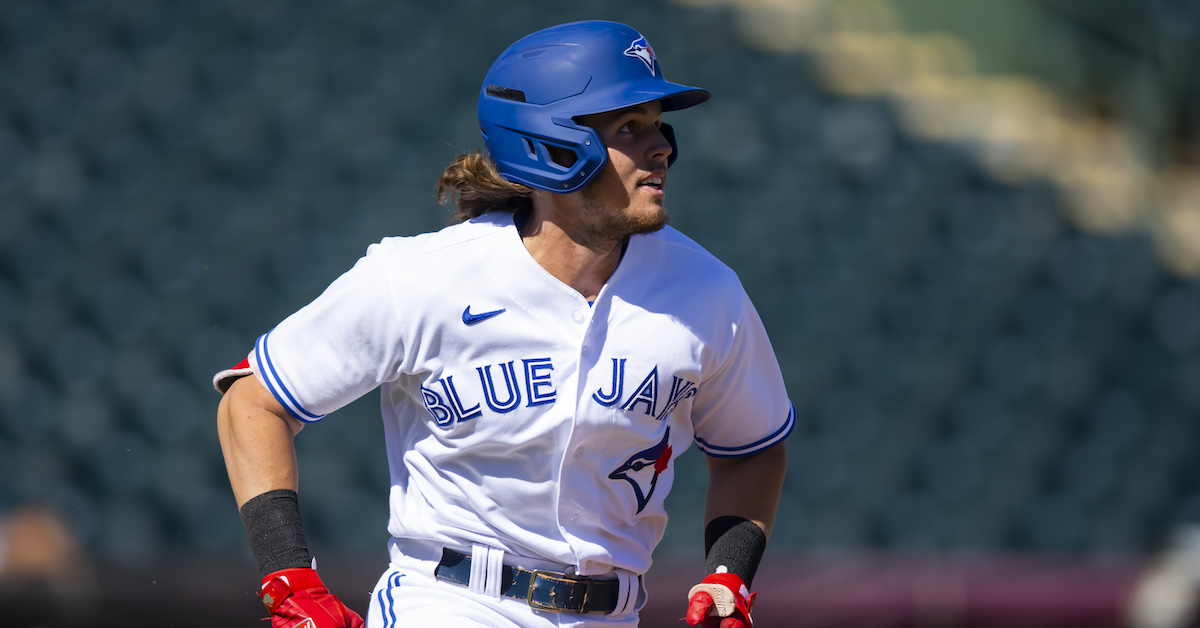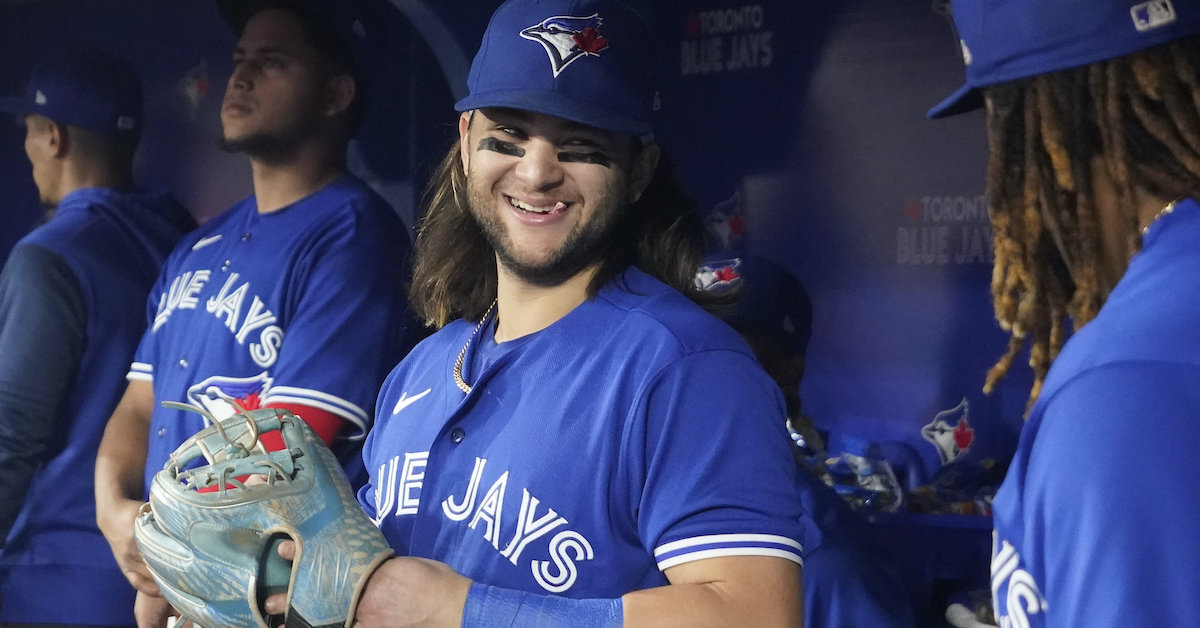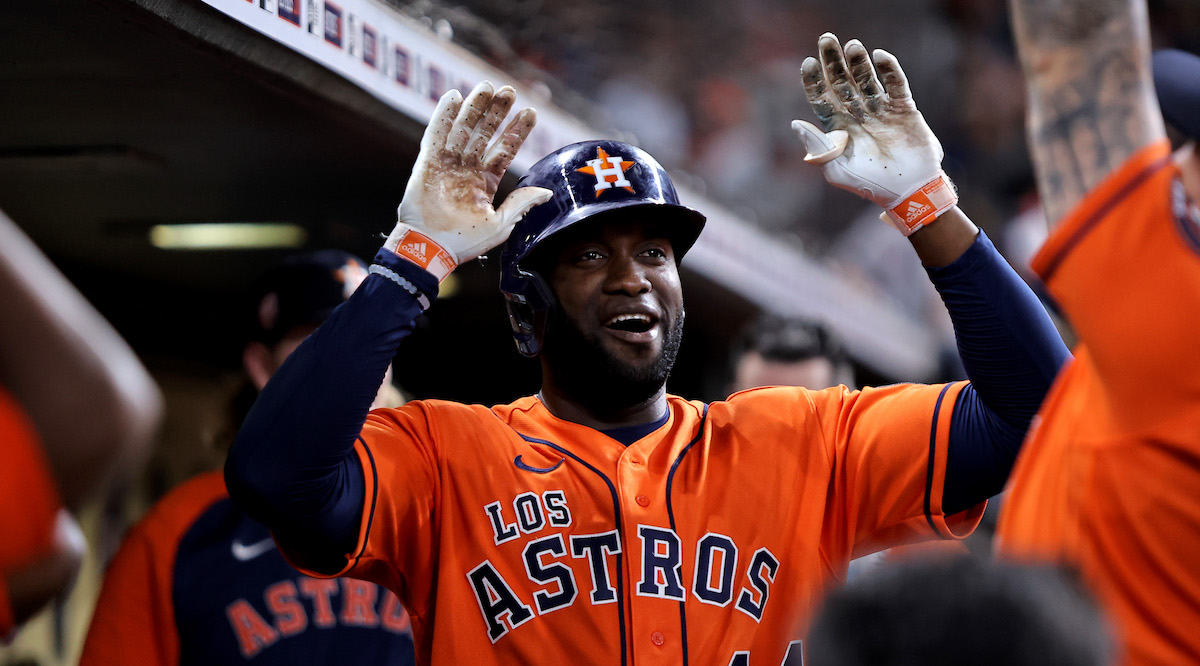Blue Jays Send Teoscar Hernández to Seattle in Three-Player Trade

The Blue Jays and Mariners have swung the biggest trade of the young offseason so far, as Seattle has acquired Teoscar Hernández from Toronto in exchange for reliever Erik Swanson and pitching prospect, Adam Macko.
For the Mariners, the calculus for this trade is simple: immediate improvement on the offensive side of things by adding one of the 30 best hitters in baseball. The table below shows hitters with at least 1,000 plate appearances since the start of the 2020 season, ranked by wRC+:
| Name | Tm | PA | wRC+ | Ranking |
|---|---|---|---|---|
| Aaron Judge | NYY | 1443 | 176 | 1 |
| Juan Soto | 2 Tms | 1514 | 160 | 2 |
| Yordan Alvarez | HOU | 1168 | 160 | 3 |
| Bryce Harper | PHI | 1269 | 156 | 4 |
| Paul Goldschmidt | STL | 1561 | 155 | 5 |
| Freddie Freeman | 2 Tms | 1665 | 153 | 6 |
| Vladimir Guerrero | TOR | 1647 | 143 | 7 |
| Jose Ramirez | CLE | 1575 | 143 | 8 |
| Mookie Betts | LAD | 1435 | 139 | 9 |
| Manny Machado | SDP | 1538 | 139 | 10 |
| Trea Turner | 2 Tms | 1613 | 139 | 11 |
| Shohei Ohtani | LAA | 1480 | 138 | 12 |
| Brandon Nimmo | NYM | 1284 | 138 | 13 |
| José Abreu | CHW | 1600 | 137 | 14 |
| George Springer | 2 Tms | 1145 | 137 | 15 |
| Ronald Acuña Jr. | ATL | 1095 | 136 | 16 |
| Pete Alonso | NYM | 1561 | 135 | 17 |
| Jose Altuve | HOU | 1492 | 135 | 18 |
| Kyle Tucker | HOU | 1404 | 135 | 19 |
| Austin Riley | ATL | 1561 | 132 | 20 |
| Teoscar Hernandez | TOR | 1336 | 132 | 21 |
| Will Smith | LAD | 1216 | 132 | 22 |
| Rafael Devers | BOS | 1526 | 132 | 23 |
| Brandon Lowe | TBR | 1105 | 132 | 24 |
| Corey Seager | 2 Tms | 1304 | 132 | 25 |
| Xander Bogaerts | BOS | 1459 | 131 | 26 |
| Yandy Díaz | TBR | 1237 | 130 | 27 |
| Carlos Correa | 2 Tms | 1450 | 130 | 28 |
| Starling Marte | 4 Tms | 1281 | 130 | 29 |
| Randy Arozarena | TBR | 1325 | 129 | 30 |
That 132 wRC+ comes with a 26.7% strikeout rate and 6.3% walk rate. That shaky plate discipline and a BABIP that ran well above average (.345) made it unclear whether Hernández could sustain this success. But changes to his stance and leg lift unlocked a part of his swing that allowed him to make hard contact in the air more consistently. Once a hitter figures out how to do that and has a 96th percentile average exit velocity like he does, the odds are in their favor.
This trade signals a few things from the Mariners. The first is that long-time outfielder Mitch Haniger is unlikely to return. That’s not shocking, given that he wasn’t extended a qualifying offer and that he seems to have already hit his offensive peak. The second is that they are going all in to try to catch the defending World Series champion Astros. Hernández is not a long-term addition; he’s under contract for just the 2023 season. This is, essentially, a one-year rental to goose the offense.
Shipping Swanson away isn’t ideal for Seattle, given his fantastic performance this season: a 1.85 FIP in 53.2 innings. But the team’s usage of him in the postseason — he only threw one inning in five games of play — suggests that he’s seen as expendable, making him an easy choice to include in a trade for a top-30 hitter. After all, even if the Mariners love Swanson’s pedigree and stuff, it’s always worth trading middle relievers for productive hitters, even if they have only one more year of team control.
That said, I’m a firm believer in Swanson. His whiff rates on his four-seamer and splitter are both well above average, and he seems to have perfected how to use them to go with his above-average extension and straight over the top delivery. The Jays’ most glaring weakness was their bullpen, so if their goal was to improve it, then they have succeeded.
The bigger question mark in the deal is Macko. He topped out this year with 38.1 innings in High A, striking out just under 36% of the hitters he faced, but he also walked 12% of them. He was solid with a 3.77 FIP and 3.21 xFIP as well. That’s all well and good, but with minor league pitchers, it’s always important to get to the good stuff — literally. So I asked Eric Longenhagen, who is constantly sourced for information, for the goods on Macko, and lucky for us, Eric got a few looks at him in the Arizona Fall League. Check out the video below to get a better look of Macko’s stuff and mechanics.
Per Eric, Macko had some Jekyll and Hyde characteristics in Arizona, with his secondaries and command coming and going depending on the outing. That makes sense, given his walk rates. When he was on, his stuff was interesting. He has two breaking balls: a curve of the loopy ilk that comes in at the low-70s, and a slider that’s more of a mid-80s gyro spin-dominant kind. Macko tended to pitch backwards in the AFL with those two pitches, adding a running four-seamer at 93–94 mph and topping at 96 to finish hitters off in the top of the zone.
To me, the most interesting tidbit was that Macko has rather short arms and as a result can get down the mound to a low release point. That’s ideal for getting whiffs and popups on fastballs at the top of the zone. By the looks of it, the spin is pretty true as well. It might not be perfect, but Macko’s fingers stay over the ball very well, which goes right in line with the pitch playing up the zone. The curveball might not have great specs on its own, but when paired with this deceptive fastball, hitters struggle to hit it. It’s the classic pairing of high four-seamers and big depth curveballs below the zone.
When Macko has command of the slider, it flashes plus. During the regular season, he used that pitch nearly a quarter of the time, and the fastball just about half the time. The curve had about a 15% usage; he also featured a changeup sparingly. Per Eric, that pitch also flashed plus when he used it. I know this all sounds exciting, but it’s always important to remind yourself that the saying of “if the command is there” needs to be at the forefront of your mind. This big “if” is enough to put Macko in the 45+ FV tier, rather than at 50 or above. But given that the Jays’ system isn’t too deep anymore, that will put him easily in their top 10 when Eric updates it.
To recap, the Mariners get a fantastic hitter to slot right into the middle of their lineup, and the Jays get a quality reliever and intriguing pitching prospect. This trade is likely only a prelude to more moves from the Jays, though; there are rumblings all around suggesting that George Springer’s time in center field will soon come to a close, and it seems like there is another play to be made there. After all, you can’t move a 130 wRC+ hitter for only a middle reliever and expect your team to improve. This is all speculation, but there is almost certainly more to come.









